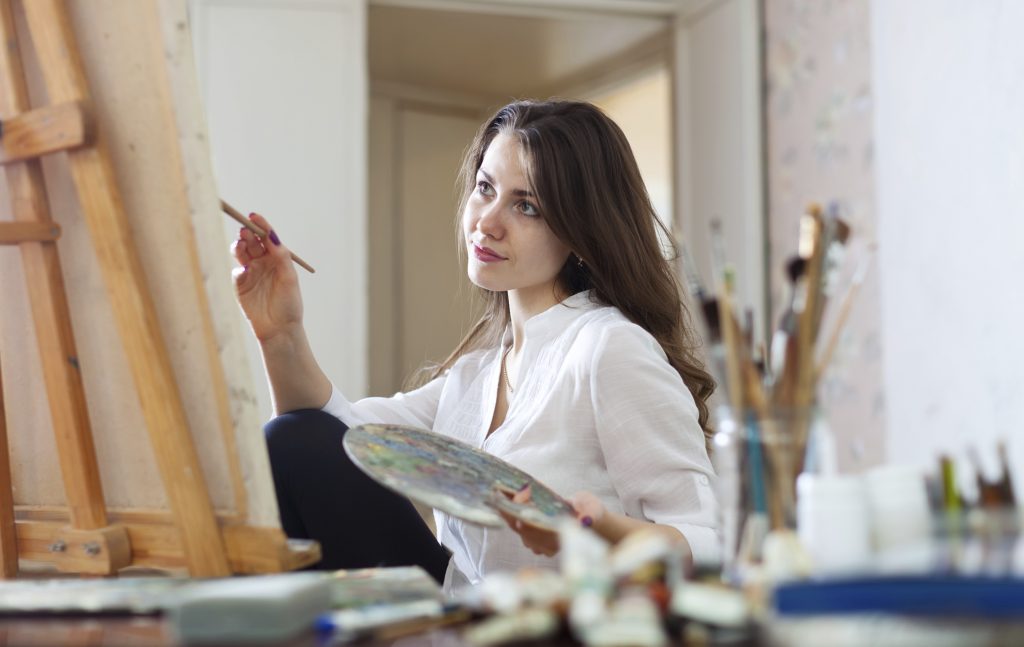Understanding Art Therapy
January 16, 2017
Art therapy? Healing through creativity? Indeed, art can be a form of therapy. Art can heal lives.

Source: pinterest.com
By blending creative art techniques with traditional psychotherapeutic approaches, individuals can uniquely connect with their artistic thoughts while fostering mental health growth.
Art Therapy Definition
Experts estimate that mental illnesses affect one in every three people. Imagine the extent and how widespread these mental health conditions (anxiety, depression, and others) are if its estimation is correct. The incidence of mental illness is at its all-time high, and the increase in these cases is attributed to the use of technology; probably, due to lesser stigma about the condition, more and more clients are seeking help and openly talking about it.
Claire Henderson, Ph.D., and co-authors wrote that “Evidence suggests that factors increasing the likelihood of treatment avoidance or delay before presenting for self-care include (1) lack of knowledge to identify features of mental illnesses, (2) ignorance about how to access treatment, (3) prejudice against people who have a mental illness and (4) expectation of discrimination against people diagnosed with mental illness.”
Innovation and research continue to find a deeper understanding of conditions and procedures; however, according to numerous accounts, people suffering from mental disorders shared that art therapy private practice is a significant factor in their recovery.
Psychotherapy takes many examples. One of which is art therapy. According to the American Art Therapy Association, credentialed art therapist utilizes the creative therapeutic process and anything related to art to aid people in an exploration of their emotional responses and strengths, and thoughts in a different vehicle.
“Art therapy utilizes images and metaphors to understand yourself,” shares Lara Hanson, LCSW, a verified art expert of Psychology Today. “Tapping into a creative, imaginative side of yourself becomes a new “window” or type of view into yourself that allows you to solve problems through a different perspective more effectively.”
What’s The Rationale Behind Art Therapy Treatment?
The rationale behind expressive art therapy treatment is its utilization of art as a primary means of communication. It can be helpful in instances where an individual finds it difficult to verbalize his thoughts and feelings. Using motor skills and physical objects like paper, art materials, and paintbrushes often fosters an atmosphere of connection between artists and those around them. Other than helping those with mental health issues, the benefits of art therapy help different people, including young children, the elderly, and those serving sentences in prison.
The way art therapy works goes beyond tangible arts. It involves expressive arts, such as music therapy and dance therapy. Different types of therapists work with people depending on their varying needs.
How Does This Treatment Function?
Art therapy is a three-way process between the client, the practiced professional art therapist, and the result. Art therapy may offer an opportunity for creativity and expression. Depending on the client’s needs, The session can be done in a one-to-one or group class. Since art therapy is highly versatile, it can be carried out in various settings: schools, hospitals, community centers, etc.
Creative art therapy conducted by art therapists from the professional credentials board typically lasts 1 to 1.5 hours and should be done regularly. During its session, involvement or participation in the activity will solely depend on the individual; if you are in a support group session with a board-certified art therapist (often with a master’s degree), observing the class is also allowed. As part of art therapy, a counselor may encourage you to display your work in front of everyone. This can help the patient accept his emotions and feel social acceptance when shared with others.
“Art therapy bypasses the left side and stimulates traumatic memory on the right side; as an individual process their artwork, the speech area of the brain reactivates, thereby reintegrating the right and left sides of the brain to promote healthy brain functioning,” noted Susan Clifton, MSW, LCSW, a facilitator of psychotherapy groups and family and couple sessions and Social Work Director for Dorothea Dix Hospital.
What Are Some Of The Artistic Expression Creativities Connected To This Form Of Treatment?
The versatility of art therapy services can curb boredom when using different mediums. In an art therapy services session, art therapists work to make you do some of the following examples of exercises:
Painting
- Creating a painting from a blank canvas is one of the purest forms of art. Creating art through attractive creative art therapy allows you to do whatever you want. It can be unsafe, especially for first-timers, but your registered art therapist will guide you by providing exercises and prompts. They will also teach basic creative techniques of painting.

Source: sf.co.ua
Art Sculpting
- Sculpting is creating a figure using clay or other pliable materials. It allows the creation of a concrete structure of something intangible. You can bring to life your emotions, self-esteem, and feelings.
Drawing / Illustration
- Some people feel the healing process is more comfortable in familiar and straightforward mediums. In a related field of drawing, each material needed is readily available.
Photography
- Utilizing a camera as a tool to see the world from a different perspective hopefully gives motivation and a venue for self-expression and self-awareness for patients with art-making enthusiasm and mental illness.
Art Therapy
These are just a few creative art and expressive art therapy exercises an individual can do. Art therapy exercises take place under the guidance of an art therapist; the individual and their specialist will discuss and explore an art media of their liking.
Frequently Asked Questions
What Are Some Techniques Used In Art Therapy?
It incorporates various methods such as painting, finger painting, sketching or drawing pictures or images of emotions, molding sculptures or forming shapes with clay, and carving wood into constructive figures or architectural marvels. These activities are done under the careful guidance of licensed therapists to help people maximize the benefits of art therapy.
How Does Art Therapy Affect The Brain?
There is a growing body of evidence in the fields of rehabilitation medicine and neuroscience that demonstrates how art positively influences brain function by affecting brain wave patterns, emotions, and even our nervous system. Besides, art can elevate serotonin levels in our bodies. Remarkably, such benefits are not limited to creating art but also extend to experiencing and appreciating it.
How Does Art Therapy Affect The Body?
Evidence suggests that creative interventions offer benefits to individuals across various age groups. Research highlights that such therapies can bolster communication abilities and attentiveness while reducing the sensation of seclusion. Moreover, engagement in these therapeutic activities is proven to result in enhanced self-esteem, confidence levels, and personal awareness.
What Are The Goals Of Art Therapy?
It is an innovative technique specialists employ to help patients interpret, express, and resolve emotions and thoughts. The individuals collaborate with an expert in this field to examine their feelings and comprehend any conflicts or emotional distress needing resolution via creative means.
How Long Does Art Therapy Take To Be Effective?
Research findings show that it takes around 8 to 15 weeks for certain therapeutic techniques based on art therapy to impact patients coping with trauma positively. These methods significantly reduce traumatic symptoms and are known to be effective in alleviating stress among individuals suffering from depression.
Who Can Benefit From Art Therapy?
Art therapy can be employed in various circumstances to address various issues. For example, adults undergoing extreme stress may benefit from such an approach. Besides, children facing behavioral or social challenges in school or within the household can find solace in these interventions. Individuals of any age who have encountered a distressing event and young individuals with learning disabilities may also find this method helpful. Furthermore, people with brain injuries might discover improvement through creative techniques tailored to their needs.
How Do Emotions Affect Art?
For instance, people who view works of art with negative emotional themes tend to exhibit increased frowning (a sign of negative feelings), while those exposed to creations with positive themes often display more smiling (indicating happiness). Besides, heightened skin conductance responses (signifying arousal) are observed when viewers engage with emotionally evocative creations.
Creative activities have the power to enhance personal well-being by offering individuals avenues for expressing thoughts, emotions, and viewpoints. This approach has gained wide recognition as a means of fostering personal growth, mindfulness practices, and self-exploration journeys.
How does art affect memory?
How does art improve concentration?
How does art affect mental health problems?
How is art therapy healing?
Who uses art therapy the most?
What activities are done in art therapy?
Why is art therapy good for trauma or post traumatic stress disorder?
Can I do art therapy by myself?